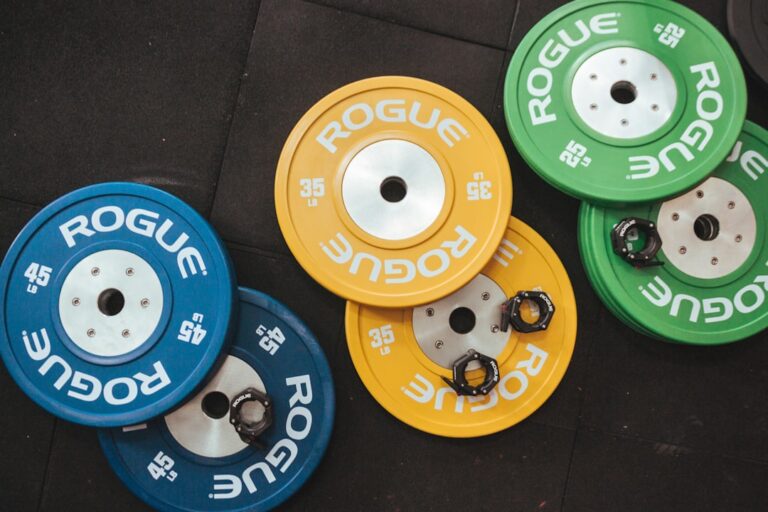Sawzall blades are a type of reciprocating saw blade that is designed for cutting through a variety of materials. They are commonly used in construction, demolition, and remodeling projects, as well as for DIY enthusiasts. The name “Sawzall” is actually a trademarked term by the Milwaukee Tool Company, but it has become a generic term for any reciprocating saw.
One of the main benefits of using Sawzall blades is their versatility. They can be used to cut through a wide range of materials, including wood, metal, plastic, and even masonry. This makes them an essential tool for any project that involves cutting or demolition work. Additionally, Sawzall blades are known for their speed and efficiency. They can make quick work of even the toughest materials, saving you time and effort.
Key Takeaways
- Sawzall blades are the ultimate cutting solution for a variety of materials.
- There are different types of Sawzall blades for different uses, including wood, metal, and demolition.
- Choosing the right Sawzall blade for your project is important for achieving the best results.
- Proper installation and maintenance of Sawzall blades is crucial for safety and longevity.
- Advantages of using Sawzall blades include versatility, speed, and precision cutting.
Types of Sawzall Blades and Their Uses
There are several different types of Sawzall blades available, each designed for specific cutting tasks. Here are some of the most common types:
1. Demolition blades: These blades are specifically designed for heavy-duty cutting and demolition work. They have a thick, rigid body and large teeth that can easily cut through nails, screws, and other tough materials. Demolition blades are ideal for tearing down walls, removing old flooring, or any other project that requires aggressive cutting.
2. Metal cutting blades: As the name suggests, these blades are designed for cutting through metal. They have fine teeth that are specially designed to cut through metal quickly and efficiently. Metal cutting blades are commonly used in plumbing and electrical work, as well as in automotive repair.
3. Wood cutting blades: Wood cutting blades have larger teeth with wider spacing, which allows for faster cutting through wood. They are ideal for cutting through lumber, plywood, and other wood materials. Wood cutting blades are commonly used in construction, carpentry, and woodworking projects.
4. Specialty blades: In addition to the standard types of Sawzall blades, there are also specialty blades available for specific cutting tasks. For example, there are blades designed for cutting through PVC pipe, drywall, and even concrete. These specialty blades have unique tooth designs and cutting edges that are optimized for their specific applications.
Choosing the Right Sawzall Blade for Your Project
When choosing a Sawzall blade for your project, there are several factors to consider. First and foremost, you need to consider the material you will be cutting. Different materials require different types of blades, so it’s important to choose one that is specifically designed for the material you will be working with.
Another factor to consider is the thickness of the material. Thicker materials may require a blade with larger teeth or a more aggressive tooth design. On the other hand, thinner materials may require a blade with smaller teeth or a finer tooth design.
It’s also important to consider the length of the blade. Longer blades are better suited for cutting through thicker materials, while shorter blades are better suited for cutting through thinner materials or in tight spaces.
Finally, you should also consider the type of cut you will be making. For example, if you need to make a straight cut, a blade with a straight tooth design would be ideal. If you need to make curved cuts or intricate shapes, a blade with a curved tooth design would be more suitable.
How to Properly Install and Maintain Sawzall Blades
Properly installing and maintaining your Sawzall blades is essential for optimal performance and longevity. Here are some steps for installing a blade:
1. Make sure the saw is unplugged or the battery is removed before installing or removing a blade.
2. Locate the blade release lever or button on your saw and press it to release the old blade.
3. Insert the new blade into the blade clamp, making sure that the teeth are facing in the direction of the cut.
4. Tighten the blade clamp securely, ensuring that the blade is held firmly in place.
To maintain your Sawzall blades, it’s important to keep them clean and free from debris. After each use, wipe down the blade with a clean cloth to remove any dirt or residue. You can also use a wire brush or a toothbrush to remove any stubborn debris.
It’s also a good idea to periodically lubricate your Sawzall blades to reduce friction and prevent overheating. Apply a few drops of lubricating oil to the teeth of the blade and wipe off any excess oil before using.
Additionally, it’s important to inspect your blades regularly for any signs of damage or wear. If you notice any bent or broken teeth, it’s time to replace the blade. Using a damaged or worn-out blade can not only affect cutting performance but also pose a safety risk.
Advantages of Using Sawzall Blades for Cutting
There are several advantages to using Sawzall blades for cutting. Here are some of the main benefits:
1. Versatility: Sawzall blades are incredibly versatile and can be used to cut through a wide range of materials, including wood, metal, plastic, and masonry. This makes them an essential tool for any project that involves cutting or demolition work.
2. Speed and efficiency: Sawzall blades are known for their speed and efficiency. They can make quick work of even the toughest materials, saving you time and effort. Whether you’re cutting through wood, metal, or concrete, a Sawzall blade can get the job done quickly and efficiently.
3. Precision cutting: Despite their power and speed, Sawzall blades also offer precision cutting capabilities. With the right blade and technique, you can make clean, accurate cuts with ease. This makes them ideal for projects that require precise measurements and intricate cuts.
Common Materials Cut with Sawzall Blades

Sawzall blades are designed to cut through a wide range of materials. Here are some of the most common materials that can be cut with Sawzall blades:
1. Wood: Sawzall blades are commonly used for cutting through wood, including lumber, plywood, and even hardwoods. Wood cutting blades have larger teeth with wider spacing, which allows for faster cutting through wood.
2. Metal: Sawzall blades are also commonly used for cutting through metal, including steel, aluminum, and copper. Metal cutting blades have fine teeth that are specially designed to cut through metal quickly and efficiently.
3. PVC: Sawzall blades can also be used for cutting through PVC pipe and other plastic materials. Specialty blades with a unique tooth design are available for this specific application.
4. Drywall: Sawzall blades can make quick work of cutting through drywall, making them ideal for remodeling and renovation projects. Drywall cutting blades have a fine tooth design that allows for clean, precise cuts.
Safety Tips When Using Sawzall Blades
When using Sawzall blades, it’s important to prioritize safety. Here are some safety tips to keep in mind:
1. Wear protective gear: Always wear safety goggles or a face shield to protect your eyes from flying debris. Additionally, wear gloves to protect your hands and ear protection to reduce noise exposure.
2. Proper handling techniques: Hold the saw firmly with both hands and maintain a stable stance while cutting. Avoid overreaching or standing on unstable surfaces while using the saw.
3. Precautions for specific materials: When cutting through metal or masonry, be aware of sparks and wear appropriate protective clothing to prevent injury. When cutting through wood or plastic, be mindful of kickback and ensure that the material is securely clamped or supported.
Comparing Sawzall Blades to Other Cutting Tools
While Sawzall blades are incredibly versatile and useful, it’s important to note that they are not the only cutting tool available. Here’s a comparison of Sawzall blades to other common cutting tools:
1. Circular saws: Circular saws are another popular cutting tool that is commonly used for making straight cuts in wood and other materials. While circular saws are great for making long, straight cuts, they are not as versatile as Sawzall blades and cannot cut through as wide a range of materials.
2. Jigsaws: Jigsaws are designed for making curved cuts and intricate shapes in wood and other materials. While jigsaws offer more maneuverability and precision than Sawzall blades, they are not as powerful or efficient for heavy-duty cutting tasks.
3. Reciprocating saws: Reciprocating saws are similar to Sawzall blades in that they use a back-and-forth motion to cut through materials. However, reciprocating saws are typically larger and more powerful than Sawzall blades, making them better suited for heavy-duty cutting and demolition work.
Frequently Asked Questions About Sawzall Blades
Here are some frequently asked questions about Sawzall blades:
1. Can Sawzall blades cut through concrete?
While Sawzall blades can cut through a wide range of materials, including masonry, they are not specifically designed for cutting through concrete. For cutting through concrete, it’s best to use a diamond blade or a specialized concrete-cutting blade.
2. How long do Sawzall blades last?
The lifespan of a Sawzall blade depends on several factors, including the type of material being cut, the frequency of use, and the quality of the blade. On average, a Sawzall blade can last anywhere from a few hours to several months, depending on these factors.
3. Can Sawzall blades be sharpened?
Sawzall blades are typically not designed to be sharpened. Once the teeth become dull or damaged, it’s best to replace the blade with a new one for optimal cutting performance.
Why Sawzall Blades are the Ultimate Cutting Solution
In conclusion, Sawzall blades are an essential tool for any cutting or demolition project. They offer versatility, speed, and precision cutting capabilities that make them the ultimate cutting solution. Whether you’re cutting through wood, metal, plastic, or even concrete, a Sawzall blade can get the job done quickly and efficiently.
By choosing the right blade for your project and properly installing and maintaining it, you can ensure optimal performance and longevity. Remember to prioritize safety by wearing protective gear and following proper handling techniques.
Overall, Sawzall blades are a must-have tool for any DIY enthusiast or professional contractor. Their versatility and usefulness make them an invaluable addition to any toolbox. So the next time you have a cutting or demolition project, reach for a Sawzall blade and experience the ultimate cutting solution.
If you’re in need of high-quality sawzall blades, look no further! We’ve found an excellent article that provides valuable insights on choosing the right sawzall blade for your specific needs. Whether you’re a professional contractor or a DIY enthusiast, this article from DomainsRank.com will guide you through the different types of sawzall blades available in the market and help you make an informed decision. Don’t miss out on this opportunity to enhance your cutting efficiency and precision. Check out the article here!
FAQs
What are sawzall blades?
Sawzall blades are cutting tools that are used with reciprocating saws, also known as sawzalls. They are designed to cut through a variety of materials, including wood, metal, and plastic.
What are the different types of sawzall blades?
There are several different types of sawzall blades, including wood-cutting blades, metal-cutting blades, demolition blades, and specialty blades for cutting materials like tile and cement.
What materials are sawzall blades made from?
Sawzall blades can be made from a variety of materials, including high-speed steel, bi-metal, carbide, and diamond.
How do I choose the right sawzall blade for my project?
To choose the right sawzall blade for your project, consider the material you will be cutting, the thickness of the material, and the type of cut you need to make. Consult the manufacturer’s recommendations for guidance.
How do I install a sawzall blade?
To install a sawzall blade, first make sure the saw is unplugged or the battery is removed. Then, release the blade clamp and insert the blade into the clamp. Tighten the clamp securely before using the saw.
How do I maintain my sawzall blades?
To maintain your sawzall blades, keep them clean and free of debris. Use a wire brush to remove any buildup on the teeth of the blade. Store the blades in a dry, cool place to prevent rust and damage. Replace blades when they become dull or damaged.













+ There are no comments
Add yours